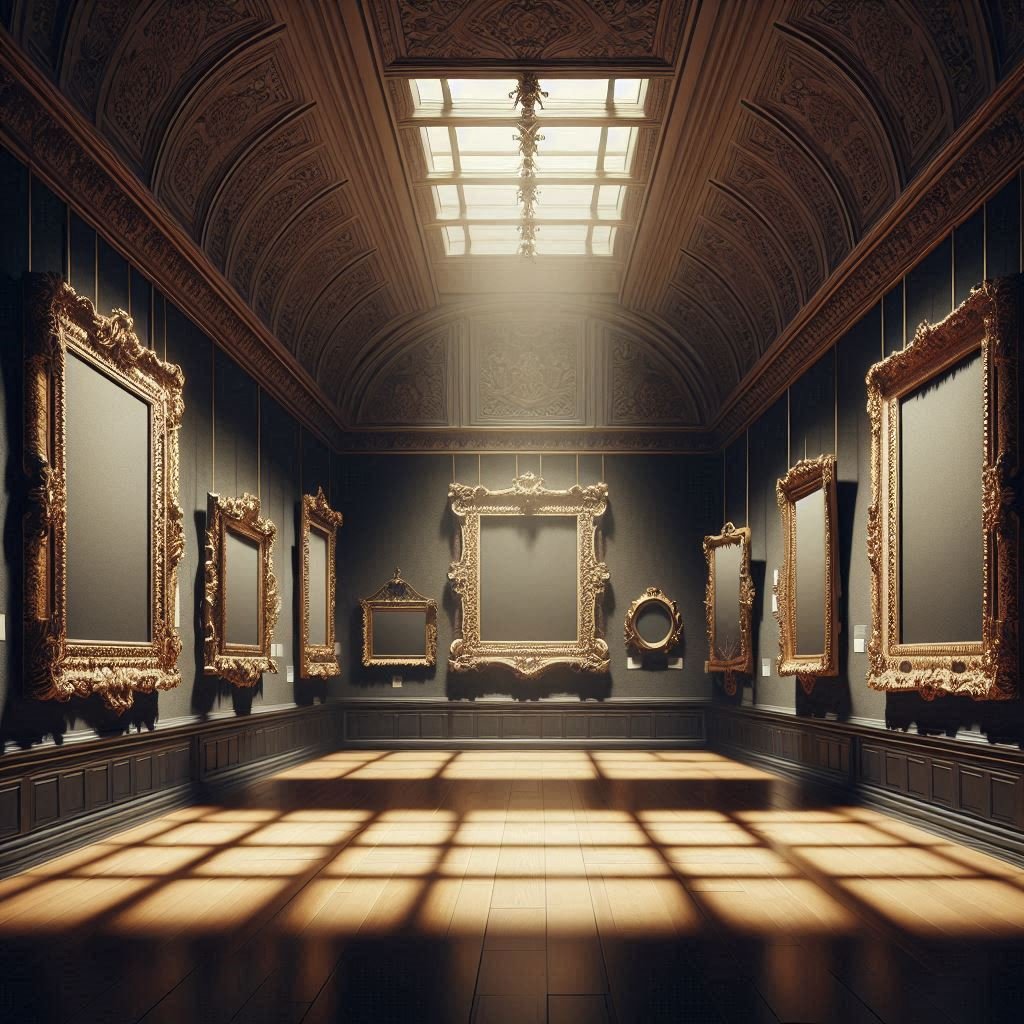Imagine waking up one morning and discovering that the most valuable art in the world—paintings worth half a billion dollars—had vanished overnight. No alarms went off. No guards saw anything strange. And the thieves? They disappeared into the darkness without leaving a single trace.
This isn’t a movie plot. It’s real.
And to this day, no one knows where that missing art went.
This is the story of the Isabella Stewart Gardner Museum Heist—the world’s largest unsolved art theft. A case so bizarre that it feels like something straight out of a mystery novel, complete with disguises, secret alarms, and priceless treasures that may never be seen again.
The Museum Built Like a Dream
Our story begins in Boston, Massachusetts—a city famous for its history, its cobblestones, and its ghosts. But this story isn’t about those. It’s about a museum that looked like it belonged in Venice, Italy, sitting quietly along the Fenway in Boston.
The Isabella Stewart Gardner Museum wasn’t just another art gallery. It was a personal masterpiece—built by Isabella Gardner herself in the early 1900s. She was a wealthy, eccentric woman who loved art more than anything. When she died, she left behind a will with one very strict rule:
Nothing inside the museum could ever be changed.
No paintings could be moved. No furniture could be rearranged. Nothing could be added or removed.
It was supposed to preserve her vision forever.
Instead, it would trap a mystery that still haunts the art world to this day.
A Cold March Night
It’s the early hours of March 18, 1990.
Boston is freezing. The streets are empty. Inside the museum, two security guards are on duty: Rick Abath and Randy Hestand.
It’s quiet—too quiet. Midnight passes. Then 1 a.m. Then 2.
Rick, a 23-year-old musician with long hair and a laid-back attitude, is sitting behind the front desk when something strange happens.
The buzzer rings.
He looks up and sees two men in police uniforms standing outside the locked glass door. One of them leans into the intercom and says,
“Boston Police. We got a call about a disturbance. Can we come in?”
Rick hesitates. It’s late, and they weren’t expecting anyone. But they’re cops—at least, they look like cops. So he buzzes them in.
That decision would become one of the most expensive mistakes in history.
The Perfect Disguise
As soon as the men step inside, something feels off. They’re too calm. Too confident.
One of them points at Rick and says, “You look familiar. I think there’s a warrant out for your arrest. Step away from the desk.”
Rick laughs nervously, thinking it’s a joke. But the man says, “No, really. Come over here.”
Before Rick can react, one of the “officers” handcuffs him. Then the other guard, Randy, comes out from another room—and they handcuff him too.
And that’s when the truth comes out.
“These are not police officers,” Rick realizes.
The fake cops tape their mouths shut, bind their hands and legs, and march them down to the museum’s basement.
Before they leave, one of the thieves says something chilling:
“Don’t worry. This won’t take long.”
The Heist Begins
For the next 81 minutes, the thieves move through the museum with surgical precision.
They seem to know exactly what they want.
They ignore some paintings worth tens of millions—and go straight for specific ones.
They cut the paintings out of their frames with razor blades, careful not to damage the canvases. They take 13 pieces in total:
-
The Concert by Vermeer – one of only 34 paintings by the artist in existence.
-
The Storm on the Sea of Galilee by Rembrandt – his only known seascape.
-
A Lady and Gentleman in Black, also by Rembrandt.
-
Chez Tortoni by Manet.
-
Five sketches by Degas.
-
An ancient Chinese bronze beaker called a gu.
-
And a small Napoleonic flag finial.
When they’re done, the empty frames are left hanging on the walls—like open wounds.
At one point, the thieves even take a break. They sit down in the security office and remove the tapes from the security cameras. The entire time, they move calmly, like men who know exactly how much time they have.
At 2:45 a.m., they load their stolen art into a small hatchback and vanish into the night.
The $500 Million Ghost
The next morning, museum staff arrive and find the front door unlocked.
When they go inside, they find the basement door chained shut from the outside. The guards aren’t responding.
Then they see the empty frames.
Panic spreads. Police arrive. Reporters swarm. But by then, the paintings are long gone.
In total, the stolen artwork is valued at over $500 million—making it the largest art theft in history.
But what’s stranger than what was taken… is what wasn’t.
The thieves left behind other works that were far more valuable, including a priceless Titian and a Michelangelo drawing. They also ignored large amounts of cash sitting nearby.
So what did they really want?
The Investigation
The FBI immediately launches a massive investigation.
They interview Rick Abath—the guard who let the thieves in. His story stays consistent: he thought they were real cops. But investigators can’t get past one weird fact.
At some point during the night, Rick had opened a side door—something he wasn’t supposed to do. The museum’s motion sensors showed it. Why did he do it?
Rick insists it was just routine—he was checking the lock. But some people think he may have been involved, either willingly or under pressure.
Still, there’s no evidence to charge him.
The FBI explores other theories: organized crime, international smuggling rings, even inside jobs. Leads come and go, but none stick.
For years, the case drifts like smoke—no witnesses, no suspects, no ransom, and no paintings.
The Ghost Trail
Years later, strange whispers begin to surface.
Some say the art ended up in Boston’s criminal underworld, used as collateral for drug deals and weapons trades. Others claim it was moved overseas—to Ireland, Italy, even Japan.
At one point, the FBI believes it has identified the culprits—two men connected to Boston’s mob. But both are dead before they can be questioned.
When their homes are searched, nothing is found.
The paintings—worth more than the budgets of some small countries—are simply… gone.
The Empty Frames
Inside the Gardner Museum, the staff decided to keep the empty frames hanging on the walls exactly as they were left.
Visitors walk through the same rooms today and see them—ragged edges where masterpieces used to hang, a haunting reminder of what was lost.
The museum still offers a $10 million reward for any information leading to the recovery of the art. But no one has ever come forward.
It’s as if the paintings were swallowed by the earth.
Theories and Shadows
Every few years, a new theory surfaces—each one more bizarre than the last.
Some believe the heist was carried out by professional art thieves hired by a private collector who wanted the paintings for himself. Others think it was a mob operation that went wrong—maybe the paintings were destroyed to hide the evidence.
One theory even suggests that the thieves panicked and buried the art somewhere near Boston, where it’s still hidden underground.
In 2013, the FBI publicly announced that they knew who committed the crime—but couldn’t name them because both men were dead.
Yet even with that announcement, no art was recovered. No proof. No closure.
It was like solving a riddle but losing the answer.
A $500 Million Mystery
Decades have passed, but the case refuses to die.
Investigators still chase tips. Occasionally, someone claims to have seen one of the stolen paintings, hanging in a private home or hidden in a storage unit—but none of those claims have ever been confirmed.
The art world calls it “The $500 Million Ghost.”
Because in the end, that’s what the thieves left behind—a haunting absence.
Thirteen masterpieces vanished into thin air, their empty frames whispering through the museum halls like ghosts.
The Unanswered Questions
Why those paintings?
Why that night?
Why the disguise as police officers?
Whoever did it knew the layout of the museum perfectly. They knew where the motion sensors were, how much time they had, and even where the security tapes were stored.
It wasn’t random—it was calculated.
And yet, even the smartest criminals eventually slip up. They talk. They sell. They make mistakes.
But in this case, nothing.
No fingerprints.
No confessions.
No art.
Just silence.
A Legacy of Shadows
Today, the Isabella Stewart Gardner Museum still stands exactly as Isabella wanted it—unchanged. The same furniture, the same layout, the same air of quiet reverence.
Except for those empty frames.
They hang like scars, telling a story of beauty stolen and mystery unsolved.
Every year, visitors stand in front of them, imagining what once was: Vermeer’s calm interior, Rembrandt’s stormy sea, the brushstrokes frozen in time.
And they ask the same question the world has been asking for more than thirty years:
Where did the art go?
The Final Scene
There’s a chilling truth about great mysteries: sometimes, they never end.
The thieves are probably gone. The art may never resurface. But the Gardner Heist endures because it isn’t just a crime—it’s a ghost story.
A story about two men who walked into a museum one cold night, bound two guards, stole half a billion dollars’ worth of history… and vanished forever.
The perfect crime.
The perfect mystery.
The perfect ghost.




